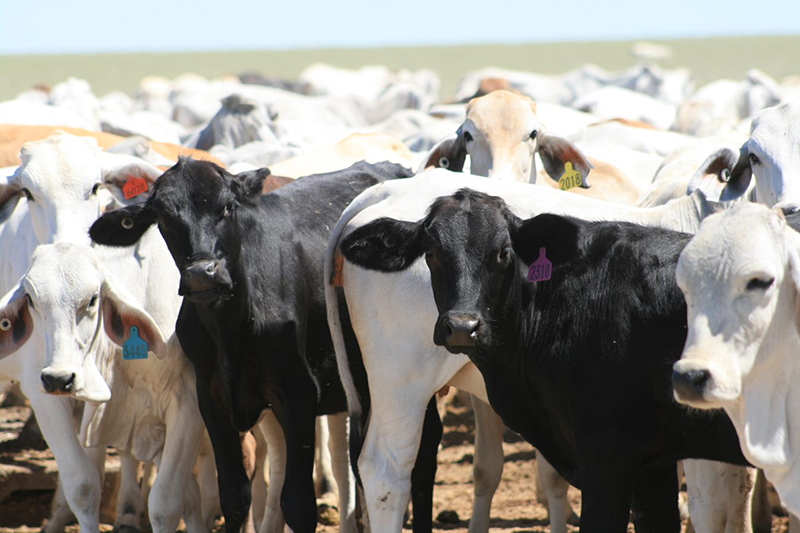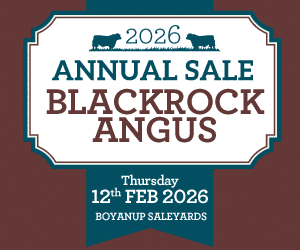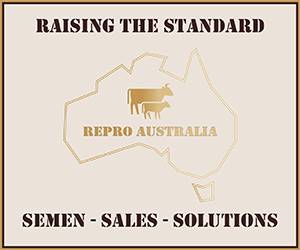Angus genetics are playing a key role in the breeding program at the Consolidated Pastoral Company’s (CPC) property Newcastle Waters.
Newcastle Waters, some 10,331 km2 in area is located along the Stuart Highway approximately 400km south of Katherine and 282km north of Tennant Creek. Consisting of mixed country types including sand hill desert country (the Tanami Desert is to the west of Newcastle Waters), red ridges, Coolabah floodplains and the large freshwater ‘Lake Woods’, the property carries approximately 60,000 head although currently reduced due to the worst drought conditions in living memory.
One of Newcastle Waters key assets is ‘Lake Woods’, an ephemeral freshwater lake encompassing an area when full of some 1240 km2. Being dry for the first time in a number of years, the lake naturally grows wall to wall stands of ‘Verbine’ being a high protein native legume. On the day of my visit, one paddock alone on this lake carried 12,000 mixed Grey Brahman and Angus cross male cattle. Another paddock is used for bulls when not put out for joining.
High quality feed through access to the Verbine, access to water and shade, vaccinations including Pestivirus, vibrio, lepto (7 in 1) and blooded for tick fever as well as a 12-month acclimatisation period before putting out to cows is vital for the Angus and Angus influenced bulls (e.g. Ultrablack) being used on Newcastle Waters given the heat, humidity, ticks and fly. Joining approximately 17,000 breeders p.a., the Angus and Angus influenced bulls are used in addition to several other breeds. Consistency in progeny, improved fertility and market flexibility are strong advantages which Consolidated Pastoral Company see as a benefit in using Angus and Angus influenced genetics as part of the company’s wider breeding program.
Although the main breeding herd is majority Grey Brahman, the Angus and Angus influenced bulls have been introduced to the breeding program within the last 3 years to help inject uniformity and consistency in progeny, with approximately 80% of all their calves polled as reported by Marcus Doumany, Group Manager for the Barkly region. This is a major factor when considering labour requirements and more importantly maintains a high level of animal welfare which Consolidated Pastoral Company strongly believes in.
Using Angus and Angus influenced bulls also virtually eliminates the incidence of brindle coats, therefore improving access to the Indonesian market which also accepts flatback cattle. Using Angus genetics has also provided market diversity through the option to sell progeny to southern domestic feeder markets, thereby safeguarding against any market disruption.
Fertility is vitally important, with one of the key objectives being to reduce the first calf heifer joining age, from approximately 18 months currently, down to 13 months of age. Angus genetics will play a key role in this regard as the number of first cross Angus-Brahman female progeny retained in the herd is increased and subsequently joined.








